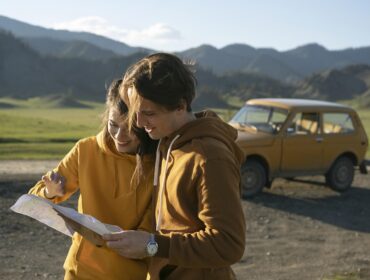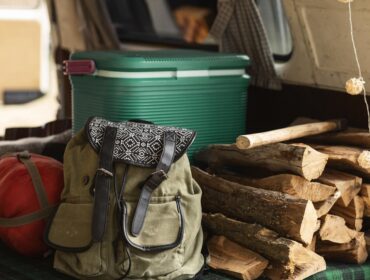Introduction
There’s something meditative and wild about gliding silently over water, paddle in hand, surrounded by nature. Kayaking and canoeing aren’t just water sports—they’re immersive experiences that take you deep into the heart of America’s most beautiful and remote landscapes. Whether you’re paddling a placid lake at sunrise or maneuvering through churning whitewater, there’s a waterway in the U.S. waiting for your bow to cut through it.
In this guide, we explore the top kayaking and canoeing routes in the United States, spanning tranquil lake loops, epic river systems, and wild coastal stretches. Whether you’re a seasoned paddler or a curious beginner, these destinations offer a memorable way to explore the great outdoors—one stroke at a time.
1. Boundary Waters Canoe Area Wilderness (BWCAW), Minnesota

Type: Multi-day Canoe Trips
Difficulty: Intermediate to Advanced
The Boundary Waters is a paddler’s paradise, offering more than 1,200 miles of canoe routes and over 1,000 lakes and streams. Located along the U.S.–Canada border, this pristine wilderness provides solitude, wildlife, and starlit skies. Expect glassy lakes, portages between waterways, and loons calling at dawn.
Why it’s a must-paddle:
-
No motorized boats in many areas
-
Camp anywhere with a permit
-
Epic backcountry feel with minimal development
Tip: Plan ahead—permits are limited and summer spots fill quickly.
2. Colorado River through the Grand Canyon, Arizona

Type: Whitewater Kayaking & Raft Support
Difficulty: Advanced (Guided trips available)
For adrenaline junkies, paddling the Colorado River through the Grand Canyon is the ultimate adventure. You’ll navigate powerful rapids, camp on sandy beaches, and witness jaw-dropping canyon walls towering thousands of feet overhead.
Why it’s legendary:
-
Iconic whitewater like Lava Falls and Crystal Rapid
-
277 miles of sheer wilderness
-
Geological marvels and ancient petroglyphs
Note: Private trips require permits through a lottery system; guided group trips are easier for most paddlers.
3. San Juan Islands, Washington

Type: Sea Kayaking
Difficulty: Beginner to Intermediate
Kayak among orcas, sea lions, and rocky outcrops in this stunning archipelago off Washington State. The San Juan Islands offer calm summer waters, clear views of Mount Baker, and plenty of marine life encounters.
Why you’ll love it:
-
Ideal for wildlife watching
-
Sunset paddles between islands
-
Dozens of launch points and guided options
Planning tip: Stick to the east sides of the islands for gentler conditions if you’re new to sea kayaking.
4. Everglades National Park, Florida

Type: Flatwater Paddling
Difficulty: All skill levels
Experience a tropical wilderness by canoe or kayak through mangrove tunnels, sawgrass marshes, and shallow lakes. The Everglades offers routes like the 99-mile Wilderness Waterway or shorter loops around Flamingo and Gulf Coast.
What makes it unique:
-
Paddling with alligators, manatees, and spoonbills
-
Rare chance to kayak through subtropical wilderness
-
Backcountry chickee platforms for overnight stays
Note: Bug spray is essential; winter is the best season to avoid mosquitoes and storms.
5. Buffalo National River, Arkansas

Type: River Kayaking & Canoeing
Difficulty: Beginner to Intermediate
America’s first national river, the Buffalo River, flows through Ozark valleys and towering limestone bluffs. Paddle past waterfalls, wildflowers, and bald eagles. The river runs free-flowing for 135 miles, with access to multi-day campsites and day-trip options.
Why it’s popular:
-
Crystal-clear waters and scenic cliffs
-
Easily accessible yet uncrowded
-
Great for spring paddling after snowmelt
Local tip: March to June is best for consistent water levels.
6. Lake Tahoe Water Trail, California/Nevada

Type: Lake Kayaking
Difficulty: Beginner to Intermediate
Surrounded by the Sierra Nevada mountains, Lake Tahoe is one of the clearest and deepest lakes in the U.S. The Lake Tahoe Water Trail covers 72 miles of shoreline with campsites, beaches, and outfitters along the way.
Why it’s worth the paddle:
-
Turquoise coves and alpine views
-
Calm, clear summer waters
-
Combine paddling with swimming, camping, or hiking
Best season: Late spring through early fall, but mornings are calmest.
7. Apostle Islands Sea Caves, Wisconsin

Type: Sea Kayaking on Lake Superior
Difficulty: Intermediate (Weather-dependent)
Paddle along Lake Superior’s Apostle Islands to explore dramatic sea caves, towering sandstone cliffs, and unspoiled beaches. Depending on the winds and waves, you may enter natural arches and caves carved by centuries of wave action.
Highlights include:
-
Water-carved caves with cathedral acoustics
-
Overnight camping on protected islands
-
Lighthouse tours and dark sky zones
Safety tip: Check marine forecasts; Lake Superior can change quickly.
8. Allagash Wilderness Waterway, Maine

Type: Remote Canoe Trip
Difficulty: Intermediate
The Allagash Wilderness Waterway in northern Maine spans over 90 miles of lakes, rivers, and streams through boreal forest. It’s one of the last true wilderness canoe routes in the Eastern U.S., where you’ll see more moose than people.
Why it’s unforgettable:
-
Remote and rugged with excellent campsites
-
Abundant wildlife, from otters to loons
-
Classic portage-and-paddle canoe culture
Prep tip: Bring a good map, bear canister, and rain gear—it’s wet and wild up there.
9. Lower Wisconsin River, Wisconsin

Type: Easy River Canoeing
Difficulty: Beginner
This wide, slow-moving river is ideal for first-time paddlers or family trips. The Lower Wisconsin River features plenty of sandbars perfect for camping, grilling, or relaxing under the stars.
Great for:
-
Casual weekend floats
-
No portages or rapids
-
Stunning fall foliage
What to pack: Dry bags, a cooler, and a camp chair—this is a laid-back paddle route.
10. Lake Powell and Glen Canyon, Utah/Arizona

Type: Flatwater Kayaking
Difficulty: All Levels
Lake Powell’s surreal landscape of red rock walls, narrow slot canyons, and turquoise waters creates a paddling experience unlike any other. With over 1,900 miles of shoreline, it’s a choose-your-own-adventure water world.
Why it stuns:
-
Kayak into slot canyons only accessible by water
-
Sunrise and sunset paddles are jaw-dropping
-
Camp on remote beaches under stars
Environmental note: Water levels can fluctuate, so check conditions and launch points before your trip.
Planning Tips for Kayaking and Canoeing Trips
What to Pack
-
Navigation tools (map, compass, or GPS)
-
Sunscreen, bug spray, and first-aid kit
-
Plenty of drinking water or filtration system
Guided Tours vs. DIY
Beginner paddlers should consider guided tours for safety, especially in sea or whitewater conditions. Most major destinations have outfitters offering:
-
Rentals and gear
-
Instructional trips
-
Shuttle services for point-to-point routes
When to Go
| Region | Best Paddling Season |
|---|---|
| Northern US | May–September |
| Southern US | October–April |
| West Coast | Late spring to early fall |
| Great Lakes | June–August |
| Alaska | June–August |
Conclusion
From the wilds of Minnesota to the canyon walls of Arizona, the U.S. is filled with world-class kayaking and canoeing routes for every kind of paddler. Some promise serene solitude; others, an adrenaline-fueled whitewater rush. But all of them offer one thing: a chance to connect with the water, the landscape, and yourself.
So dust off that paddle, pack your gear, and paddle north—or south, east, or west. Wherever you go, a new adventure awaits just beyond the next bend.
FAQs: Top Kayaking and Canoeing Routes in the US
1. Do I need experience to kayak or canoe on these routes?
Not all of them. Some routes like the Lower Wisconsin River, Lake Tahoe, and parts of the Everglades are beginner-friendly. Others, like the Colorado River through the Grand Canyon or Apostle Islands sea caves, require intermediate to advanced skills—or a guide.
2. Is kayaking or canoeing better for long-distance travel?
Both are great, but canoes tend to carry more gear and are better for multi-day flatwater trips (like Boundary Waters). Kayaks offer better speed and control in rough or coastal waters (like Lake Superior or San Juan Islands).
3. Do I need a permit for these paddle routes?
Yes, for several locations:
-
Boundary Waters Canoe Area requires entry permits
-
Colorado River in the Grand Canyon has a lottery system
-
Allagash Waterway and Everglades backcountry camping also require permits
Always check with the managing park or forest service.
4. When is the best season for paddling in the U.S.?
It depends on location:
-
Northern states (Minnesota, Maine, Wisconsin): May to September
-
Southern routes (Florida, Arizona): October to April
-
Mountain and alpine lakes (Tahoe, Powell): Late spring to early fall
Always check weather and water conditions before going.
5. Are guided trips available for these routes?
Yes. Most destinations offer guided paddling trips, which include:
-
Gear rental
-
Safety briefings
-
Trained guides familiar with local routes and weather
They’re ideal for beginners or paddlers trying a new environment, like sea kayaking or whitewater.





